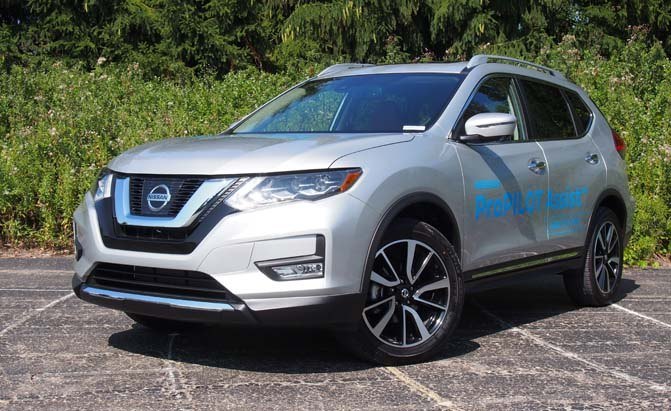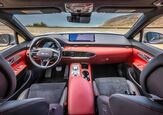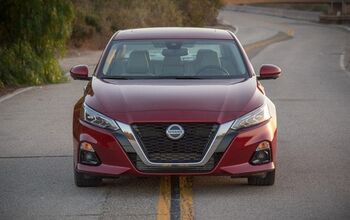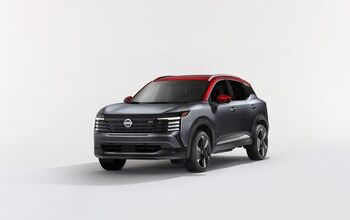Nissan ProPILOT Assist Takes Adaptive Cruise Control to the Next Level

ProPILOT Assist is Nissan’s next-generation adaptive cruise-control system. Intended to reduce driver fatigue on highway trips, it’s an important next step on the road to self-driving cars.
In development for about four years with more than 50,000 incident-free miles logged, this technology will launch on the brand’s Leaf electric vehicle by year’s end. Its market introduction may be several calendar pages away, but the system is essentially ready now, which is why Nissan just allowed select media to experience it firsthand on public roads.
What Does it Do?
But before diving into how it performs in the real world, it’s necessary to explain what ProPILOT Assist is, and more importantly, what it is not. According to Andy Christensen, senior manager of intelligent transportation systems research at Nissan, this technology works like “an enhanced version of intelligent cruise control.” Under no circumstance is it autonomous, the driver must remain involved and alert, with their hands on the wheel.
Like other adaptive-cruise systems, ProPILOT Assist automatically maintains a safe following distance behind other traffic, adjusting speed accordingly and stopping the vehicle if required. It also provides steering assist to keep you centered in the desired lane of travel. But what really sets it apart from the pack is how well it works.
Sensors and Silicon and Software, Oh My!
Enabling all this functionality is an array of sensors, including both a forward-facing optical camera and radar unit. Beyond this, there’s electronically assisted power steering, a separate control computer, and plenty of software tying these things together.
SEE ALSO: This Concept Car Aims to Eliminate Crashes and Emissions
To function as advertised, ProPILOT Assist requires “clear and consistent lane marks,” said Christensen. This means it has some limitations. “Low sun can be an issue,” he noted, such as in the morning or evening where it blinds the camera. Also, wintertime salt buildup can reduce contrast between the road and lane markings, giving the system a hard time.
How Well Does it Work?
But during fair weather and in favorable conditions, this technology works amazingly well, as we experienced firsthand on a busy highway.
To engage ProPILOT Assist, the driver simply hits a button on the steering wheel, then sets a desired speed. If lane lines are visible, a couple seconds later there’s a beep, alerting them that the vehicle is now essentially controlling itself.
Just to reiterate, this is not an autonomous function, the driver’s hands must remain on the wheel. The system can detect, through steering-wheel input torque, whether you’re actively participating or not. Should you decide to read a book or catch some Z’s, the vehicle will respond in short order. After about five seconds of inattentiveness, it will try grabbing your attention through a visual warning in the instrument cluster, then via an acoustic alarm. If that’s not enough, after roughly 15 seconds, it will pulse the brakes a couple times. Should that fail, it begins slowing down on its own, switching the hazard lights on and ultimately coming to a stop.
During the drive, Nissan representatives strongly discouraged us from trying any of this, which was fine since we were testing ProPILOT Assist on I-696, one of the busiest freeways in town, colloquially referred to as “Michigan’s Autobahn” because of its generally high speeds.
Demonstrated on Rogue compact crossovers, the system did an amazing job keeping us centered in our lane of travel, with none of the back-and-forth weaving often exhibited by rival offerings. Speed control was also exemplary, with the test vehicle astutely keeping pace with surrounding traffic. If another car cut in, it safely and smoothly decelerated as required. Because of its responsiveness, you get the impression that it’s looking hundreds of feet ahead, anticipating what to do next. In comparison, lesser systems are herky-jerky, seemingly unable to scan any distance beyond their front bumpers.
But there’s more here than just adaptive cruise control. ProPILOT Assist also helps steer. When engaged, the wheel’s effort is noticeably higher, giving the vehicle a planted feel. Just like its impressive speed control, this system can smoothly navigate some pretty sharp turns. As it snakes through Metro Detroit, I-696 has a few daunting corners and the Rogue we were testing judiciously navigated them without issue, never straying wide of the lane or requiring intervention.
SEE ALSO: 2017 Nissan Rogue Review
For safety reasons, Christensen said, “The driver is in control and can override at any time,” just turn the wheel or operate the pedals. Additionally, if you signal to change lanes it temporarily disengages so you can make the maneuver, seamlessly picking up where it left off once you’ve settled for a few seconds.
ProPILOT Assist is intended primarily for highway use but handles congestion just fine. In heavy traffic, it’s capable of stopping the vehicle on its own. Should you sit still for less than three seconds, it will begin moving on its own as necessary; but if the wait is longer than that, you have to manually resume, either by hitting a steering wheel-mounted button or tapping the accelerator pedal.
During inclement weather, this technology still functions, though only if the windshield wipers are in their intermittent setting. Switch them to low or high and it’s automatically disabled.
The Verdict: Nissan ProPILOT Assist
Nissan ProPILOT Assist is one of the best adaptive cruise control systems we’ve tested and a welcome step in the evolution of the automobile. Smooth and responsive, it could be a lifesaver on long-haul drives, greatly reducing stress and fatigue. It’s set to debut on the Leaf EV, most likely for the 2018 model year, though it’s no stretch to imagine this feature proliferating throughout the Nissan range in short order. It worked flawlessly on our Rogue tester, which coincidentally is the brand’s best-selling vehicle in America. It’s a no-brainer that this system would be offered here and likely its popular international twin, the X-Trail.
Discuss this story on our Nissan Forum

Born and raised in metro Detroit, Craig was steeped in mechanics from childhood. He feels as much at home with a wrench or welding gun in his hand as he does behind the wheel or in front of a camera. Putting his Bachelor's Degree in Journalism to good use, he's always pumping out videos, reviews, and features for AutoGuide.com. When the workday is over, he can be found out driving his fully restored 1936 Ford V8 sedan. Craig has covered the automotive industry full time for more than 10 years and is a member of the Automotive Press Association (APA) and Midwest Automotive Media Association (MAMA).
More by Craig Cole





































Comments
Join the conversation